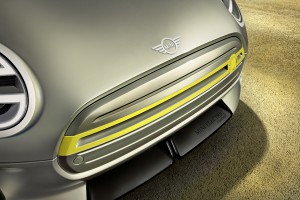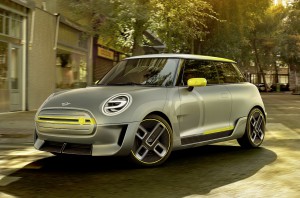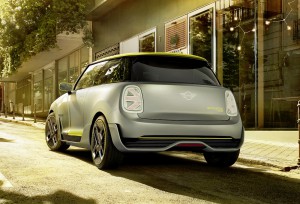The number of electric vehicles ready to make their debut next month at the 2017 Frankfurt Motor Show continues to grow as Mini announced it preparing to show its Electric Concept at the event.
Given Mini’s history, the introduction of the electric Mini represents something of a third act for the company. In its first iteration, the Mini was an affordable staple of the British automobile era; however, it disappeared after the British companies were broken up and sold off in the 1980s.
The second act was its re-emergence in the late 1990s with coaching from its new owner, BMW, the German premium brand.
The first, purely battery-electric version of the Mini will reach production in 2019 – precisely 60 years after the classic Mini was first launched. The company is hoping to it will make electro-mobility a highly emotional experience that combines driving fun, style and individual flair – as is characteristic of the Mini brand.
(Flood of long-range EVs set to hit the U.S. market by 2020. To see more, Click Here.)
Based on the Mini three-door, the electric vehicle will be manufactured at the company’s plant in Oxford, England. Its drivetrain will be produced at the Dingolfing and Landshut sites – the competence centers for e-mobility within the BMW Group production network.
The Mini Electric Concept is described as “modern, purist and efficiently dynamic.” It provides a look ahead to a new form of urban mobility free of local emissions that still guarantees unmistakable driving fun.
The quick response of the electric motor to every movement of the accelerator adds a whole new dimension to hallmark brand agility, officials said. The powerful drive of the Mini Electric Concept draws its energy from a lithium-ion battery, ensuring maximum range and typical Mini agility combined with emission-free mobility.
(Click Herefor more about the UK’s plans to ban gas and diesel vehicles.)

The Electric Concept retains much of Mini's classic styling, though the grille is closed to improve aerodynamic efficiency.
Mini expects the Electric Concept to not only retain the brand’s image as a fun car to drive, but also to do it with a more style than most other EVs and city cars currently on the road. Its design combines its well-known brand proportions and design features with specific details reflecting the fact that is purely electrically powered.
Since the electric motor does not require cooling air, the hexagonal front grille is closed in order to enhance the car’s aerodynamic properties. There are also fiberglass attachment parts that reduce aerodynamic drag.
The paint finish in Reflection Silver and Interchange Yellow is reminiscent of the Mini E presented in 2008. Produced in a small series of 600, the latter was subjected to field tests in everyday driving conditions, thereby providing key insights for the development of the purely electrically powered BMW i3.
(For more details about the Mini EV, Click Here.)
The BMW Group announced in July 2017 that the expansion of its model range to include electrically powered vehicles was to be a central pillar of its corporate strategy. In this connection, start of production of the first purely electric Mini was announced for 2019.


